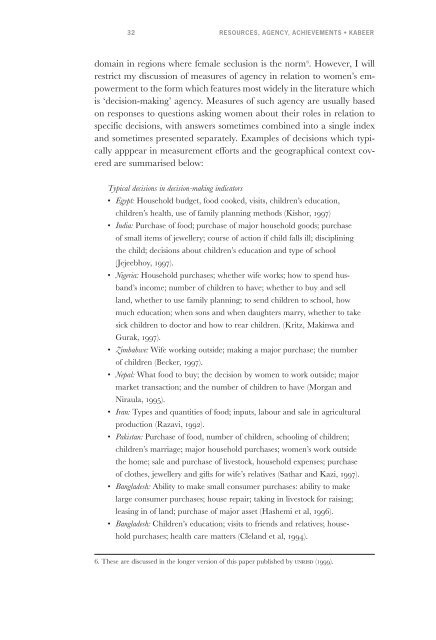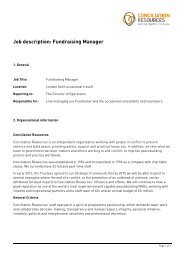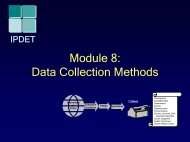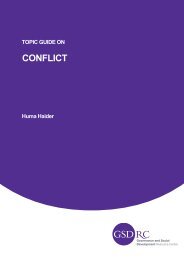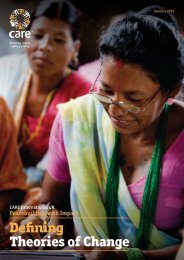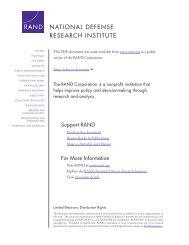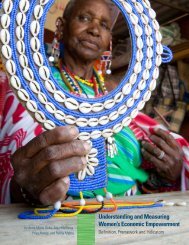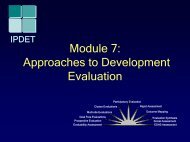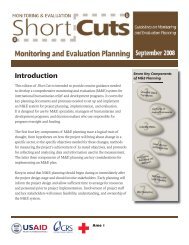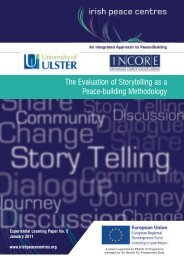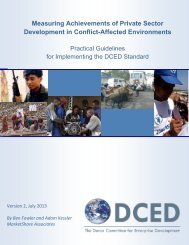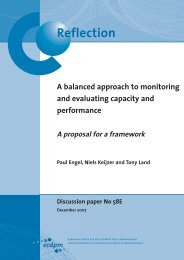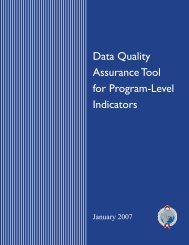Discussing Women's Empowerment - Sida
Discussing Women's Empowerment - Sida
Discussing Women's Empowerment - Sida
You also want an ePaper? Increase the reach of your titles
YUMPU automatically turns print PDFs into web optimized ePapers that Google loves.
32 RESOURCES, AGENCY, ACHIEVEMENTS • KABEER<br />
domain in regions where female seclusion is the norm 6 . However, I will<br />
restrict my discussion of measures of agency in relation to women’s empowerment<br />
to the form which features most widely in the literature which<br />
is ‘decision-making’ agency. Measures of such agency are usually based<br />
on responses to questions asking women about their roles in relation to<br />
specific decisions, with answers sometimes combined into a single index<br />
and sometimes presented separately. Examples of decisions which typically<br />
apppear in measurement efforts and the geographical context covered<br />
are summarised below:<br />
Typical decisions in decision-making indicators<br />
• Egypt: Household budget, food cooked, visits, children’s education,<br />
children’s health, use of family planning methods (Kishor, 1997)<br />
• India: Purchase of food; purchase of major household goods; purchase<br />
of small items of jewellery; course of action if child falls ill; disciplining<br />
the child; decisions about children’s education and type of school<br />
(Jejeebhoy, 1997).<br />
• Nigeria: Household purchases; whether wife works; how to spend husband’s<br />
income; number of children to have; whether to buy and sell<br />
land, whether to use family planning; to send children to school, how<br />
much education; when sons and when daughters marry, whether to take<br />
sick children to doctor and how to rear children. (Kritz, Makinwa and<br />
Gurak, 1997).<br />
• Zimbabwe: Wife working outside; making a major purchase; the number<br />
of children (Becker, 1997).<br />
• Nepal: What food to buy; the decision by women to work outside; major<br />
market transaction; and the number of children to have (Morgan and<br />
Niraula, 1995).<br />
• Iran: Types and quantities of food; inputs, labour and sale in agricultural<br />
production (Razavi, 1992).<br />
• Pakistan: Purchase of food, number of children, schooling of children;<br />
children’s marriage; major household purchases; women’s work outside<br />
the home; sale and purchase of livestock, household expenses; purchase<br />
of clothes, jewellery and gifts for wife’s relatives (Sathar and Kazi, 1997).<br />
• Bangladesh: Ability to make small consumer purchases: ability to make<br />
large consumer purchases; house repair; taking in livestock for raising;<br />
leasing in of land; purchase of major asset (Hashemi et al, 1996).<br />
• Bangladesh: Children’s education; visits to friends and relatives; household<br />
purchases; health care matters (Cleland et al, 1994).<br />
6. These are discussed in the longer version of this paper published by UNRISD (1999).


